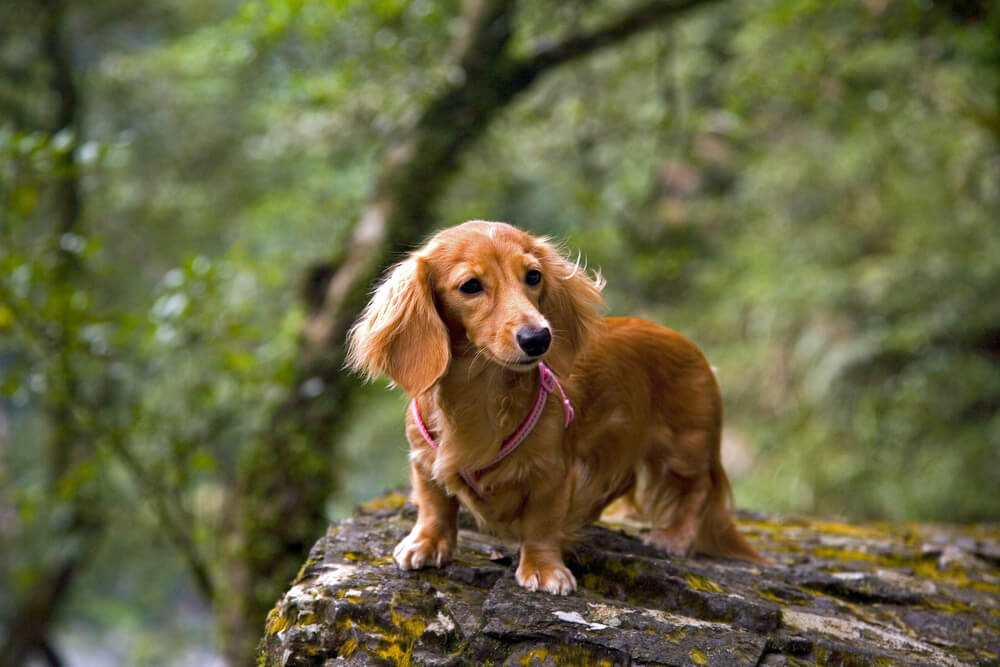Webbed feet are not just for ducks and geese, some dogs have them too. Not all of course, but some dog breeds do retain the skin between their toes for life.
In many cases this is a deliberate trait of the breed, as introduced by breeders, to aid their day-to-day existence. Webbing obviously makes swimming easier – ask any duck – but it can also help when walking on swampy or muddy ground or when digging. Which can be great for some pups, as we will explain.
What Dog Breeds Have Webbed Feet?
So…just which dogs are we referring to? Here’s a closer look at 10 dogs with webbed feet.
1. Newfoundland
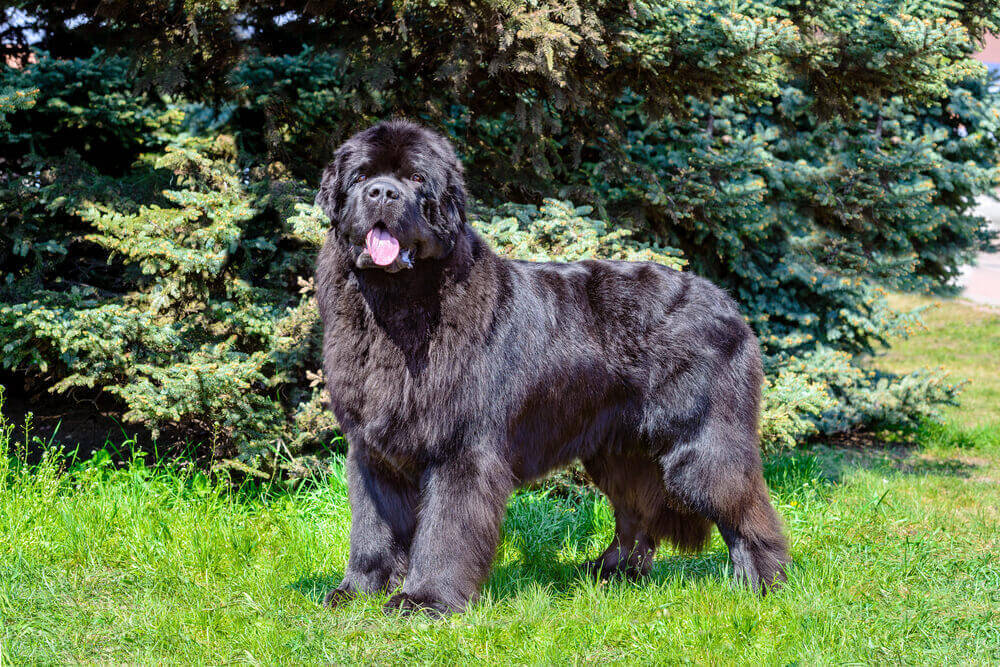
Stealing hearts in three, two, one.
The big, fluffy – and very sturdy – Newfoundland was bred to serve as a working companion to fishermen in the Canadian province of Newfoundland. Along with their dense, waterproof coats their webbed feet allow them to stay in the water for extended periods of time and to help retrieve fish and free stuck nets, two tasks they are particularly good at.
Newfoundlands not called on to be a fisherman’s friend still love the outdoors and still love dipping their webbed feet in the water, making them great family members for an active family as well as reliable search and rescue dogs, another ‘occupation’ many of these adorably cuddly pups undertake.
2. Poodle
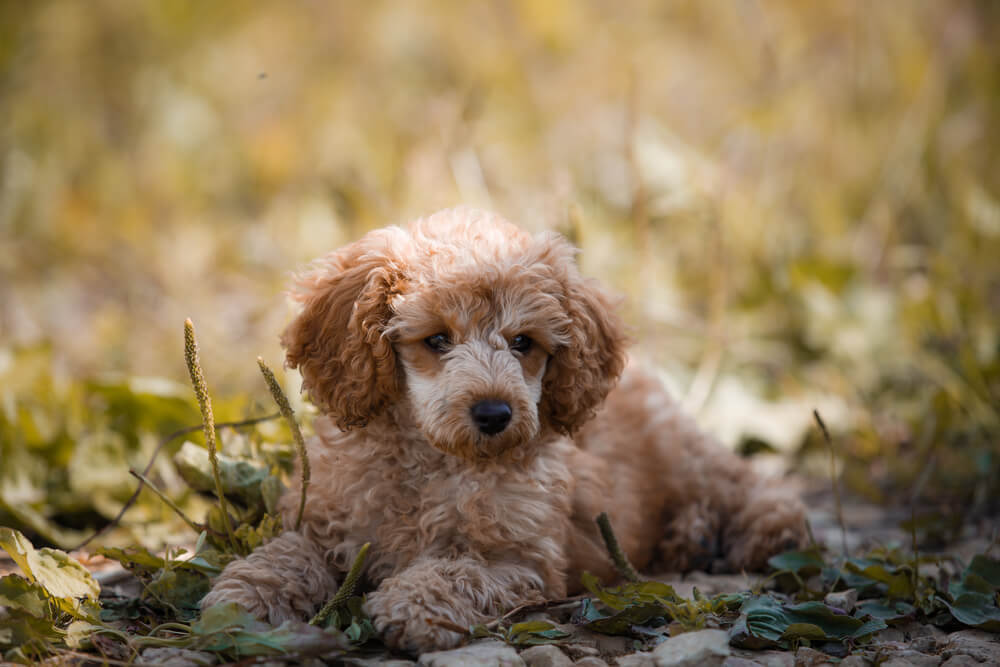
One cute toy poodle face coming uuuuuup.
The poodle, either in its larger standard or toy form, was bred with webbed feet as they too began as working water dogs, aiding French hunters by retrieving the waterfowl they had bagged and bringing it all safely back to the shore. Their webbed feet and quick drying curly coats made them especially suited to the task and their elegant, good looks made them a firm French favorite too.
Poodles still love to swim, even if it is not their job, and their high intelligence level means that they are relatively easy to train in agility-based skills or even as dock diving dogs. They will also, however, be just as happy lazing in the sun with their human family, as poodles thrive in plenty of company.
3. Nova Scotia Duck Tolling Retriever

Sitting here pretty…waiting for my ride into the great outdoors.
The delicate looking, pale blonde Nova Scotia Duck Tolling Retriever is a lesser known – but growing in popularity – member of the retriever family. The term tolling means enticing prey, and that is just what they were bred to do- entice ducks and other waterfowl into shooting range for hunters.
As much of that work is done in water their webbed feet come in very handy, as does their better than average sense of smell and their intelligence. A non-working Nova Scotia Duck Tolling Retriever still loves to swim and play, and for those looking for a less usual, active pup may be a wonderful choice.
4. Portuguese Water Dog
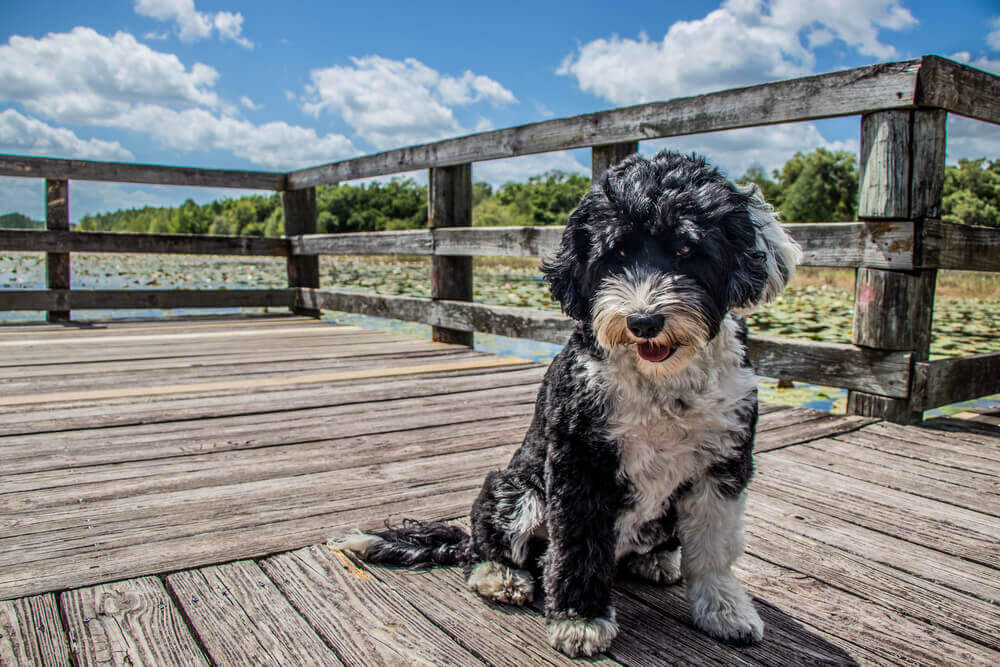
The beach is that 💪🏻👈🏻way.
Even their name describes the favorite outdoor venue for these curly coated lively pups! The Portuguese Water Dog is essentially a smaller version of a Newfoundland, and they served the same purpose, as assistants for local fishermen, in their long working history.
Their webbed feet help them be excellent swimmers and a tireless genetic work ethic means they love to play outdoors and stay active. Their dense coats are not only waterproof they are considered hypoallergenic, making them great companions for those who might be allergic to other dog breeds.
5. American Water Spaniel

Get my good side 📸
Another dog whose affinity for the aquatic is described in its name the American Water Spaniel is another pup bred to be a working water dog and has the webbed feet and water repellent coat to make them especially suited to doing so.
Even if they are now working – or ever required to work at all – the American Water Spaniel – which is a distant relative of the Portuguese Water Dog as well as the King Charles Spaniel – they love nothing more than getting their feet wet as a part of active water play.
As pets these are intelligent, lively, and affectionate dogs, but they need lots of exercise and attention or are likely to become destructive out of boredom. For those who have the time to pay attention to those needs though they make very loyal, loving pets.
6. Dachshund
While often thought of as slightly comical ‘sausage dogs’ Dachshunds were originally bred for hunting in Germany, and their webbed feet meant they could tackle almost any terrain, both on land and on water. Plus, they’re great at keeping mice and other rodents away.
Although not built for covering long distances – their little legs cannot quite manage them – the Dachshund – who can be a standard height of around 12 inches, or a miniature at less than 7 – these are highly active pups who are known for their feisty, brave temperaments. Too brave sometimes, as, unless watched carefully they may end up trying to take on dogs much bigger than them and going places they really should not, like water that is too deep!
7. Weimaraner

When mom says it’s time to go home. / Pixabay
The very distinctive Weimaraner, known for their beautiful silver coats and regal stance – was the creation, in the 1800s of one Grand Duke Karl August, a German noble from the town of Weimar who was seeking to create the perfect hunting dog. By crossing various French and German hunting dogs with a bloodhound he believed that in his Weimaraner he had found it.
For decades, the breed – who have long, lithe bodies to go along with their webbed feet – remained something of a sporting secret and native to Germany only. They were imported to the rest of Europe and the US in the 1920s and both movie star Grace Kelly and President Eisenhower owned one. They were also popularized by artistic photographer William Wegman’s portraits of his Weimaraner pups.
As a pet the Weimaraner is lively but obedient and loves to run – and swim – making them an ideal companion choice for an active fan of the outdoors.
8. Chesapeake Bay Retriever
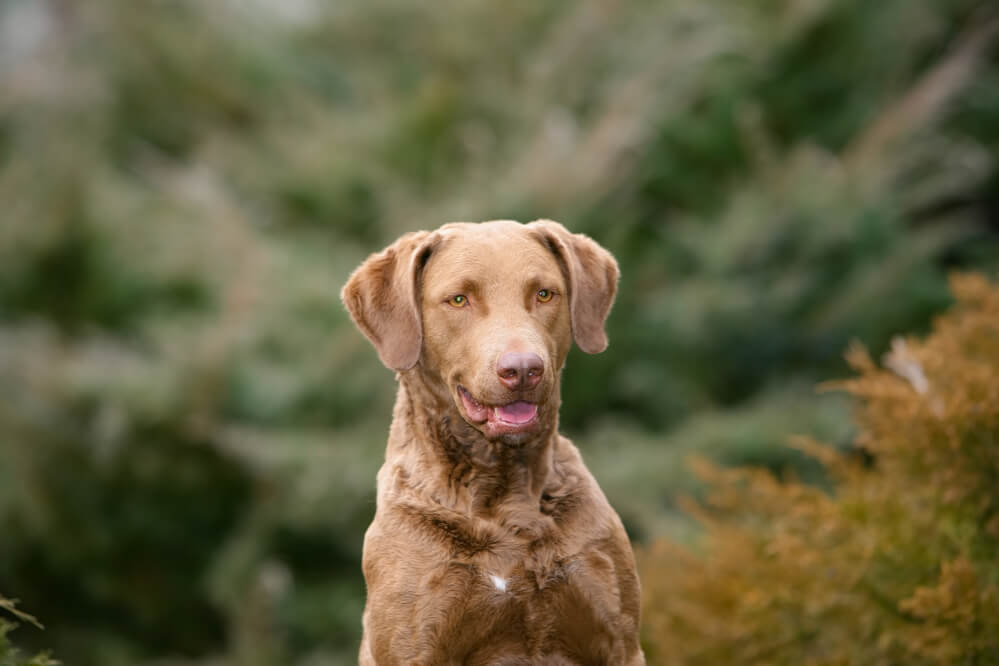
Mom says I’m pretty handsome.
The Chesapeake Bay Retriever does indeed hail from the region of New England for which they are named and were bred to help fishermen in the Bay keep ducks away from the valuable shellfish in the waters and steer them towards waiting hunters. To help them in this pursuit the breed was developed to have both a water-resistant coat and wide, webbed feet.
From a distance the Chesapeake Bay Retriever looks not unlike its distant cousin the Labrador Retriever, but get closer, and you will see that they have a dense, curly coat that not only helped keep them dry in the icy waters of the Chesapeake Bay but warm too.
As pets like the Labrador Retriever these smart pups make lively, but loyal companions who love kids, other animals, and lots of playtime, both in and out of the water.
9. Labrador Retrievers

Just look at that smile.
Speaking of Labrador Retrievers, America’s most popular dog breed also has webbed feet. Before they became fixtures in living rooms across the USA the Labrador Retriever was also a hunter. Bred from the now extinct St. John’s Dog, the Labrador actually comes from Newfoundland, where it was utilized to hunt both ducks and retrieve fish, making its webbed feet almost a must!
As many people know from experience, they can be great pets, but need lots of attention and exercise, as well as a careful eye kept on their diet as they do have a tendency to overeat.
10. Irish Water Spaniel
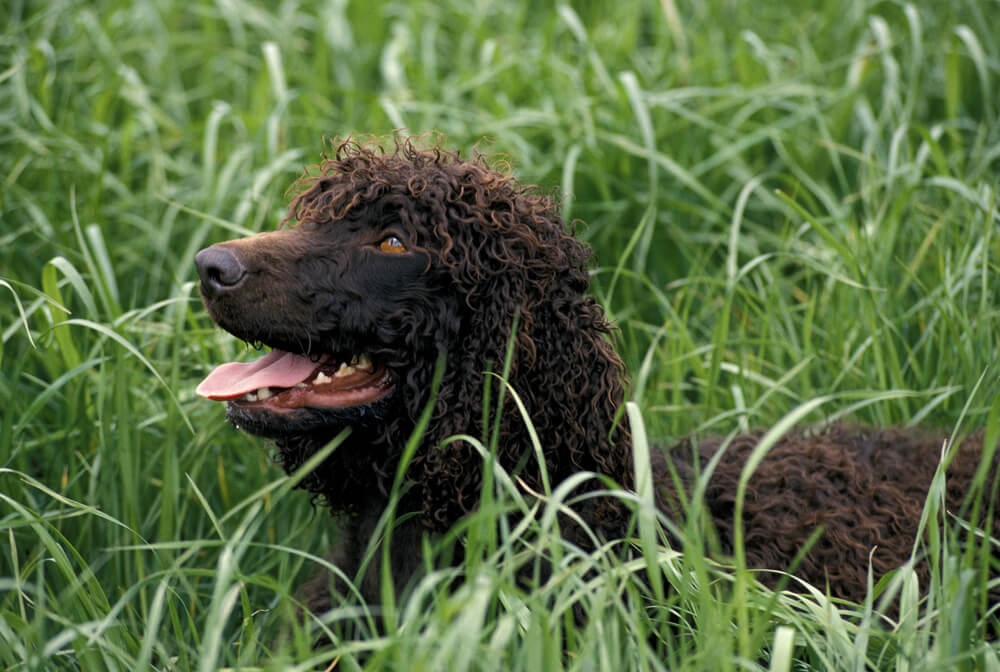
Watchful amber eyes 👀
The last web-footed dog breed on our list is also the oldest, as the Irish Water Spaniel can trace its roots back to 7th century Ireland.
Before the 1800s in Europe spaniels were divided into land and water varieties. In addition to the Irish Water Spaniel there was also an English version and a Scottish version, now sadly extinct, called the Tweed Water Spaniel. All these pups were bred with large, webbed feet and curly, water resistant coats to allow them to complete all kinds of aquatic tasks.
The Irish Water Spaniel’s distinctive very curly coarse coat keeps them both warm and dry, and while they rarely need to work anymore, they still enjoy wetter outdoor pursuits and are well known as excellent competitors in a variety of canine water sports events.
More read you’ll love:
10 Dogs That Are Good With Other Dogs
Top 150+ of The Best Hunting Dog Names
Do you have one of the above dogs or a different breed? Share your owner experience in the comment section below.

